Mulberries have been dubbed a ‘superfruit’ in recent years but herbalists around the world have known of Mulberry’s healing properties long before he was made popular. While the new rage is focused on the berry, the leaves, root bark and twigs all have great medicinal value as well.
Mulberry is a deciduous tree from the Moraceae family. There are two species native to North America Morus rubra, commonly known as Red Mulberry and M. microphylla, known as Texas Mulberry. Morus alba, or White Mulberry, is native to China and considered an invasive in North America. White Mulberry is probably best known for as a food to the silk worm. Another species that has been introduced to North America is Black Mulberry, M. nigra, which is native to western Asia.
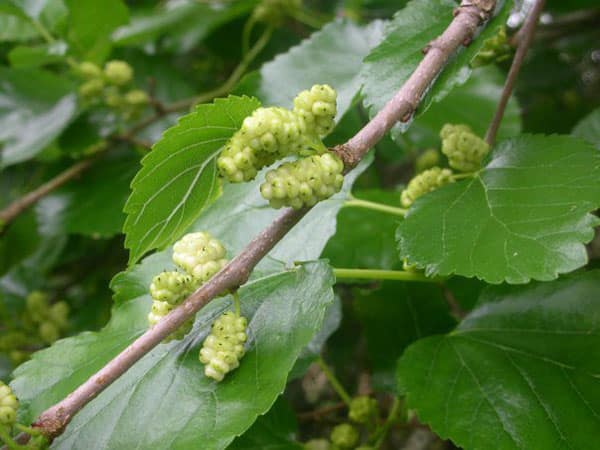
There are many discrepancies about the identification of the various species of Mulberry but they can generally be used interchangeably. Interestingly, though most studies found are on Morus alba, the few herbalists I know also use them regardless of species. James Duke, herbalist and botanist, noted this would happen in his book Handbook of Medicinal Herbs: “I suspect that… herbalists, publishing phytochemists…don’t know which species (red, white or black mulberry) they last ingested for edible or medicinal reasons. Further, I doubt that most chemical and overseas clinical trials have been vouchered…I would, myself, use them generically for food and medicine, though as a botanist, I cannot prescribe such…I’ll bet in 10 years, someone bolder than I will treat them all generically as Mulberry, Morus. spp.”
Do you have a Mulberry tree growing near you? Check your local park, permaculture center or other wild area to find Mulberry if you don’t. If you have Mulberry, take a moment to try this experiment. Pick a leaf, a berry if they are ripening, and a twig from the tree. Be sure to thank the tree for his gifts. One at a time, taste each piece and see if you can identify the energetics. Start with taste, what do you notice? Sweetness? Bitterness? These are generally the two prominent flavors. Now let’s focus on his capabilities to warm or cool. Most people find the fruit and leaf to be cooling, the twigs to be neutral and the root bark to be cold. All have a moistening action on the body.
The berries contain resveratrol, a polyphenol flavonoid antioxidant. We’ll talk a bit more about that in a bit and the importances of this constituent.
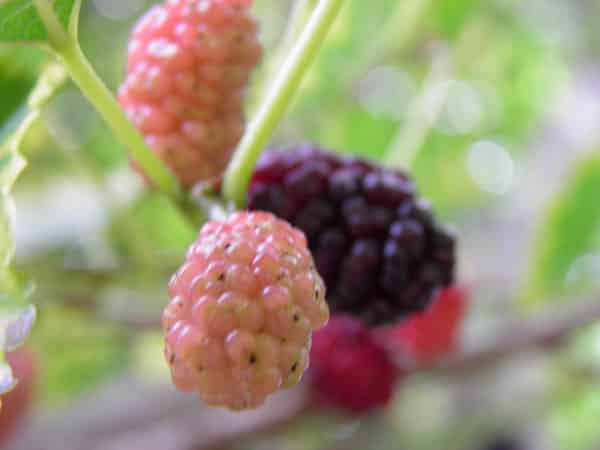
Nutritionally, the berry contains vitamins A, C, E, K, riboflavin (B2), niacin (B3), pyridoxine (B6) and folate (B9) plus choline and calcium, copper, iron, magnesium, manganese, phosphorus, potassium, selenium, sodium and zinc. No wonder he’s named a super fruit!
Medicinally, Mulberry leaf is antibacterial, antihyperglycemic, anti-inflammatory, antioxidant, antimicrobial, antiseptic, antithrombotic, antitumor, antivenomous, antiviral, diaphoretic, diuretic, expectorant, hypotensive and styptic. Mulberry fruit is antibacterial, antihyperglycemic, antioxidant, antiatherosclerosis, laxative (mild), nutritive, refrigerant and tonic. The root bark is diuretic, expectorant, hypotensive and sedative. Mulberry twig is analgesic, antirheumatic, antispasmodic and hypotensive. Let’s take a closer look at this…
As an antibacterial, Mulberry leaf has shown use in treating a inhibiting and destroying a variety of gram-positive and gram-negative bacteria. See the side bar for a complete list.

Mulberry leaf is used for treating general coat symptoms as well; sore throat, fever, headache, red, sore, painful, dry eyes, dry cough, especially when there is heat involved (think dry, hot coughs that are painful).
For dry, hot, painful coughs, Mulberry leaf work to lubricate the lungs, helping to stimulate and expectorate mucus that is stuck.
The leaves can be made into an eye wash for soothing dry, painful red eyes.
The leaf has also been found to possess anti-venom actions and has been used to help protect against the local and systemic effects of the Russell’s Viper (Daboia russelii) poison, according to Timothy Scott in his book Invasive Plant Medicine.

Studies are showing Mulberry leaf to be effective in the treatment of over 1,600 patients with elephantiasis.
The fruit is very nutritive, giving high energy without a lot of fat. It has blood glucose lowering properties, making it a great fruit for diabetics to consume without spiking their glucose levels. At the same time, Mulberry is helpful for reversing atherosclerosis and is a natural antioxidant. It is also a refrigerant, making a refreshing juice for those who are overheated in the summertime or from a fever. As a mild laxative, Mulberry fruit can help to stimulate bowel movements for those who are constipated.
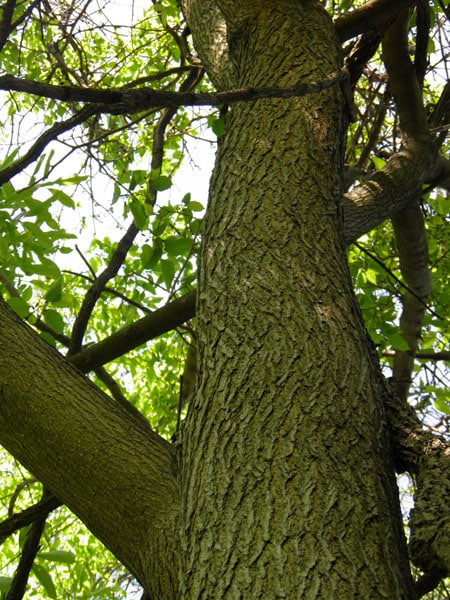
The dried Mulberries taste similar to raisins, if you have a tree growing in your neighborhood, be sure to harvest and dry some for eating year round. The choline found in Mulberry fruit is food for the brain, helping to stimulate better memory function. Eating a handful of Mulberry each day is like eating for your brain!
The twigs of Mulberry have traditionally been used to treat joint pain, arthritis, and edema. They are often used to promote circulation.
The root bark is used mainly for the lungs, clearing heat, calming wheezing and stopping a cough. It is also used as a diuretic, stimulating urine and reducing edema in the body.
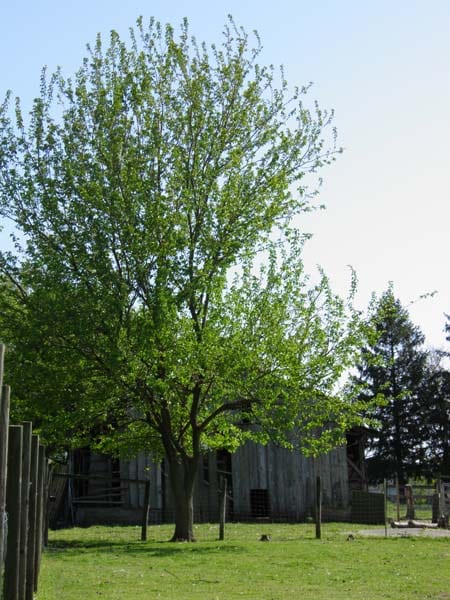
Though native to China, much of the world now has Morus alba naturalized thanks to the silk worm industry. Thousands of years ago, silk was a magical fabric and a well guarded secret. When at last the secret was discovered, Mulberries were soon planted in other areas in hopes of creating a silk industry in other parts of the world. While the silk worms often didn’t do well in their new habitats, the Mulberry did, taking over landscapes around the world. Today, in North America, the White Mulberry poses a threat to our native Red Mulberry as it hybridizes easily.
Nevertheless, silkworms are a fascinating creature! They consume only the leaves of the White Mulberry, devouring leaves as they grow and go through four molts before spinning their silken cocoon. Today, silkworms are domesticated and cannot survive outside of captivity. Those raising silkworms must feed them Mulberry leaves or a specially formulated artificial food or they will die.

Want to add a silkworm unit study to your month of learning about Mulberry? Here are some great resources:
Check out the book Silk Worm By Dina Drits at your local library
A Silkworm printable from EnchantedLearning.com
Silkworm lifecycle printable
Teacher’s resources about silkworms
Raising silkworms
Buy silkworms for a school project
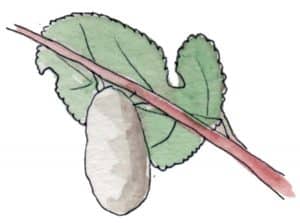
While I have mixed feelings about the demise of the silkworms for making silk, I find them to be fascinating.
Do you have Mulberries growing in your area? Do you harvest the fruits? Will you be harvesting any leaves this year for making medicine?
Want to learn more about Mulberry? Find the ebook in our shop.

